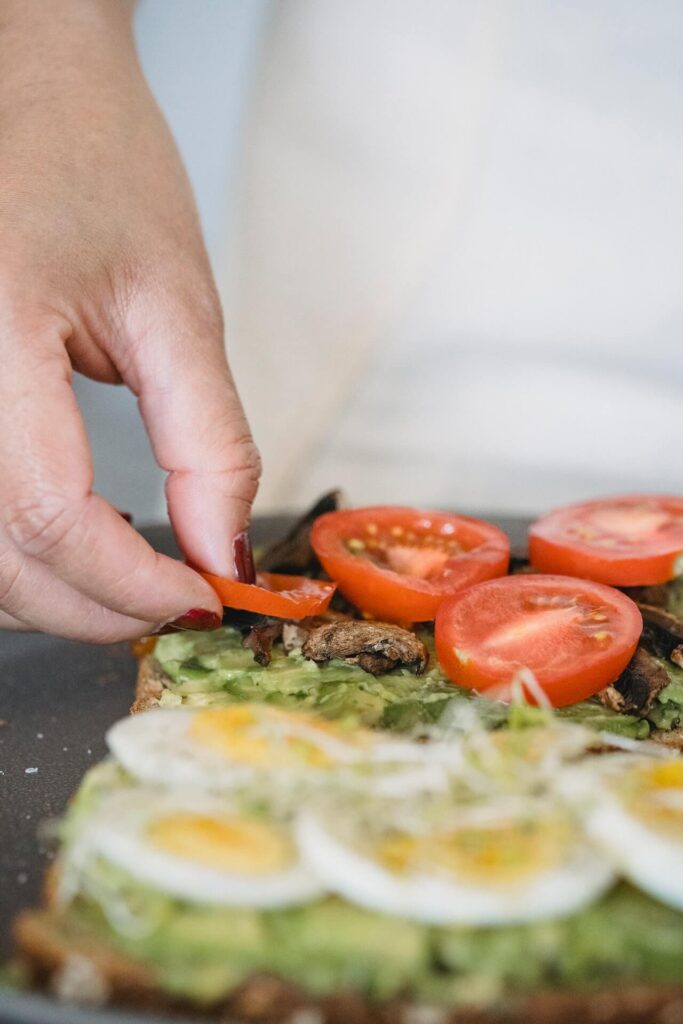Orthorexia, like vigorexia, is a new type of eating disorder that has been emerging in recent years and is increasing at a dizzying rate. Orthorexia affects 28% of the population in Western countries, according to the World Health Organization.
The media, through campaigns, advertisements, programs, etc., continually try to transmit the importance of maintaining a healthy diet, but what is healthy eating? Where is the line that separates the normal from the problematic?
Orthorexia is an unhealthy obsession that is characterized by the consumption of healthy foods. In principle, this definition does not seem to hide any eating disorder, but what if we talk about a restriction on food? People suffering from orthorexia, according to the European Food Information Council, spend more and more time establishing a dietary regime that they impose on themselves, which forces them to plan their meals several days in advance and use excessive time to achieve a simple goal.
What is orthorexia?
Steve Bratman first described orthorexia in 1997. Bratman was a physician and a staunch follower of the power of diet as a cure-all to achieve health. That is the ideal by which some groups, such as vegetarians, vegans, fruitarians, macrobiotics, etc., are governed. Many of these followers, in each of their restrictive ways of eating, end up suppressing basic food groups and can lead to dietary imbalance, an eating disorder, or even malnutrition.
In the 1970s, Bratman was a cook and organic farmer for a large community in New York and a self-described “eater of extremes” who became embroiled in a myriad of new-age food theories contested by people from different dietary camps, who held a set of contradictory assumptions about what constituted “good eating.” In the midst of all this chaos, Bratman ended up composing his own diet, consisting solely of vegetables just picked from the garden that he had to chew at least 50 times before swallowing.
Like many other people with orthorexia, his dietary restrictions became increasingly inflexible and he even encouraged others to follow his example and to punish themselves when they tried a small portion of a food that had been established as forbidden.

Orthorexics tend to carry a “survival kit” of their own food when eating out, as they cannot eat the same foods as everyone else for fear of fats, chemicals or an ingredient they are phobic about.
To follow a diet of this type, people with orthorexia show great willpower, which makes them consider themselves superior to people who are not capable of such self-control, leading this superiority to weight loss, malnutrition and, in more extreme cases, death. This situation can lead to a certain pride, i.e., they may think they are smarter than others because they consider themselves to have a healthier diet.
Unlike most eating disorders, orthorexia sufferers are very open about their eating rules, take pride and do not shy away from telling others by belittling those who do not follow these dietary rules.
On the other hand, if orthorexia sufferers break their vows and fall into the temptation of what is considered “forbidden” eating, they feel guilty, which leads them to punish themselves with even stricter dietary rules or even going as far as abstinence.
Taking into account what orthorexia consists of, we could ask ourselves what differentiates this disorder from anorexia or bulimia. Well, people suffering from anorexia or bulimia nervosa are concerned about the amount of food they eat, while orthorexia followers are obsessed with the quality of it.
The orthorexic’s diet may actually be unhealthy, cohabiting with this problem both nutritional deficiencies created by the specific diet that the person has imposed on himself as well as social problems, since an orthorexic follower may often be socially isolated by the fact of raising his life around food. They may have little room in life for anything else, losing the ability to eat intuitively, that is, to know when they are hungry, the amount they need, the type of food they need, or when they are full.
Recent researches indicate a connection between the causes of orthorexia and obsessive-compulsive disorder. Victims of orthorexia often show symptoms compatible with obsessive-compulsive disorder by having an exaggerated preoccupation with healthy eating patterns.
How can healthy eating become a bad thing?
The key is not that healthy eating is bad; obviously eating healthy is a good practice as long as you eat all kinds of food in an appropriate measure. The problem comes when you start avoiding certain foods, progressively adding products to this list of forbidden foods and as a result, get to spend two, three or even more hours a day to organize your diet, in addition to traveling long distances to get certain products just because they are organic.
The obsession of orthorexia patients in very extreme cases, not only focuses on diet but also in the preparation of food and the containers in which they will be consumed, eliminating all those utensils that are not made of wood or ceramic.
What does orthorexia involve?
According to WebMD, people with orthorexia avoid foods that contain or could contain dyes, preservatives, pesticides, genetically modified ingredients, unhealthy fats or excessive salt, sugars, and other components. They feel comfortable feeling when configuring and realizing a menu, a portion or a dish made exclusively with organic, ecological products, and with certain certificates of healthiness or that is so considered by them.
The configuration of the daily diet linked to orthorexia occupies much of the person’s time and can be broken down into four phases.
1st Phase: A first section that is dedicated to think carefully and with concern about what to eat that day or the following ones, spending much of the time immersed in this obsession and leaving aside other daily activities.
2nd Phase: Related to the meticulous and hypercritical purchase of each of the ingredients using a great amount of time since it is required to analyze the product, its composition and even its freshness.
3rd Phase: Linked to the culinary preparation of these ingredients in which techniques and procedures that are not related to health hazards will also have to be present.
4th Phase: Oriented to satisfaction, comfort or guilt depending on the adequate fulfillment of the three previous sections.

Which group is the most vulnerable?
Women are more vulnerable than men because they are more ambitious in following the established canons of beauty. Adolescence is a time of greater hormonal changes and instability for the person and those involved in sports such as bodybuilding, athletics, or rhythmic gymnastics, among others, because of the fact of keeping in shape and complementing physical exercise with a “good” diet.
The people most at risk of suffering from orthorexia are those who are characterized by being meticulous, have an exaggerated order in their lives and seek perfection. Elite athletes, bodybuilders, young adults and people of high socioeconomic status are the most vulnerable groups to suffer from this orthorexia disorder, which far from leading to healthier eating harms the health of the organism.
What are the warning signs of orthorexia?
Some of the most common symptoms of orthorexia include:
- Thinking more than 3 hours a day about meals.
- Planning meals several days in advance.
- Refusal to eat foods that please the conviction that everything that pleases is unhealthy or unhealthy.
- Refusal to eat outside the home because of the impossibility of controlling what is eaten.
- Feeling of guilt and planning punishments when eating what is not wanted or should not be eaten.
- Social isolation for not being able to share with friends and/or family the food consumed on a regular basis and for being absent to a greater extent of these social activities, dedicating that time to the preparation of the food that is intended to take.
- A feeling of peace and control when eating what is considered healthy.
- Not feeling pleasure when eating, but simply seeking order and compliance with meals. Therefore, orthorexia, which begins with the intention to eat healthy, ends up damaging the physical and emotional health from several aspects.
How about you? Do you think healthy eating can become obsessive?








